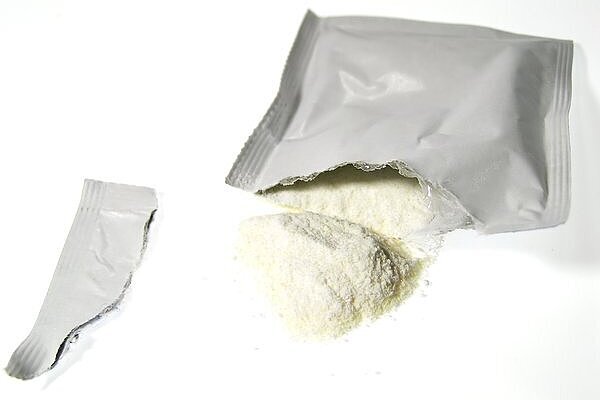Sodium polyphosphate

Sodium polyphosphate is a food additive that is used in many products for humans and animals. But what is sodium polyphosphate and how does it affect your dog's health? In this article, you can find out more about this ingredient and its advantages and disadvantages.
What is sodium polyphosphate?
Sodiumpolyphosphate is a salt of phosphoric acid that consists of several phosphate units. It belongs to the polyphosphates, which are summarized under the number E 452. Sodium polyphosphate has various functions as a food additive. For example, it can be used as a melting salt for cheese, as a stabilizer for meat or as a complexing agent for water.
What are the benefits of sodium polyphosphate for dogs?
One of the benefits of sodium polyphosphate for dogs is that it can promote dental health. Sodium polyphosphate interacts with the building blocks of dental plaque and keeps them from hardening. It can also reduce the formation of tartar. Some manufacturers of dog food or supplements therefore use sodium polyphosphate as an ingredient to support dental care.
What are the disadvantages of sodium polyphosphate for dogs?
One possible disadvantage of sodium polyphosphate for dogs is that it can impair the absorption of minerals such as calcium or magnesium. This can lead to an imbalance in the mineral balance and increase the risk of osteoporosis or other bone diseases. In addition, a high intake of phosphates can lead to hyperacidity of the blood, which in turn can put a strain on the function of organs such as the kidneys or the heart.
How much sodium polyphosphate can my dog be given?
There is no precise information on how much sodium polyphosphate your dog can tolerate or needs. However, the European Food Safety Authority (EFSA) has set a Tolerable Upper Intake Level of 70 mg/kg body weight per day for phosphates. This level applies to both humans and animals and refers to all sources of phosphates in the diet.
How do I recognize sodium polyphosphate in dog food?
To find out if your dog food contains sodium polyphosphate, you should always read the label. There you will find either the name of the additive or its number (E 452). If you are unsure, you can also contact the manufacturer and ask.
Sodium polyphosphate is a food additive with advantages and disadvantages for your dog. It can support dental health, but can also interfere with mineral absorption. The effect depends on the quantity and quality of the product. You should therefore always make sure that your dog has a balanced diet and does not consume too much phosphate.
If you notice any signs of hypersensitivity or poisoning in your dog, you should see your vet immediately. We are not a substitute for a vet, but we try to be as accurate as possible. Every dog reacts differently and we recommend you get a second opinion or consult your vet if in doubt.
Stay healthy and take good care of your four-legged friend!😊
Similar to Sodium polyphosphate
Potassium sorbate is the potassium salt of sorbic acid, a natural organic acid found in some fruits such as berries. Potassium sorbate has an antimicrobial effect, i.e. it inhibits the growth of...
Calcium propionate is a salt that is produced synthetically from propionic acid (E 280). Propionic acid is an organic acid that also occurs naturally in some foods such as cheese or sauerkraut....
Sodium benzoate (C7H5NaO2) is the sodium salt of benzoic acid, an organic compound that occurs naturally in some fruits and spices. It is often used as a synthetic preservative in foods,...
Magnesium stearate is a salt consisting of magnesium and stearic acid. Stearic acid is a saturated fatty acid found in many vegetable and animal fats. Magnesium stearate has a white, powdery or...



